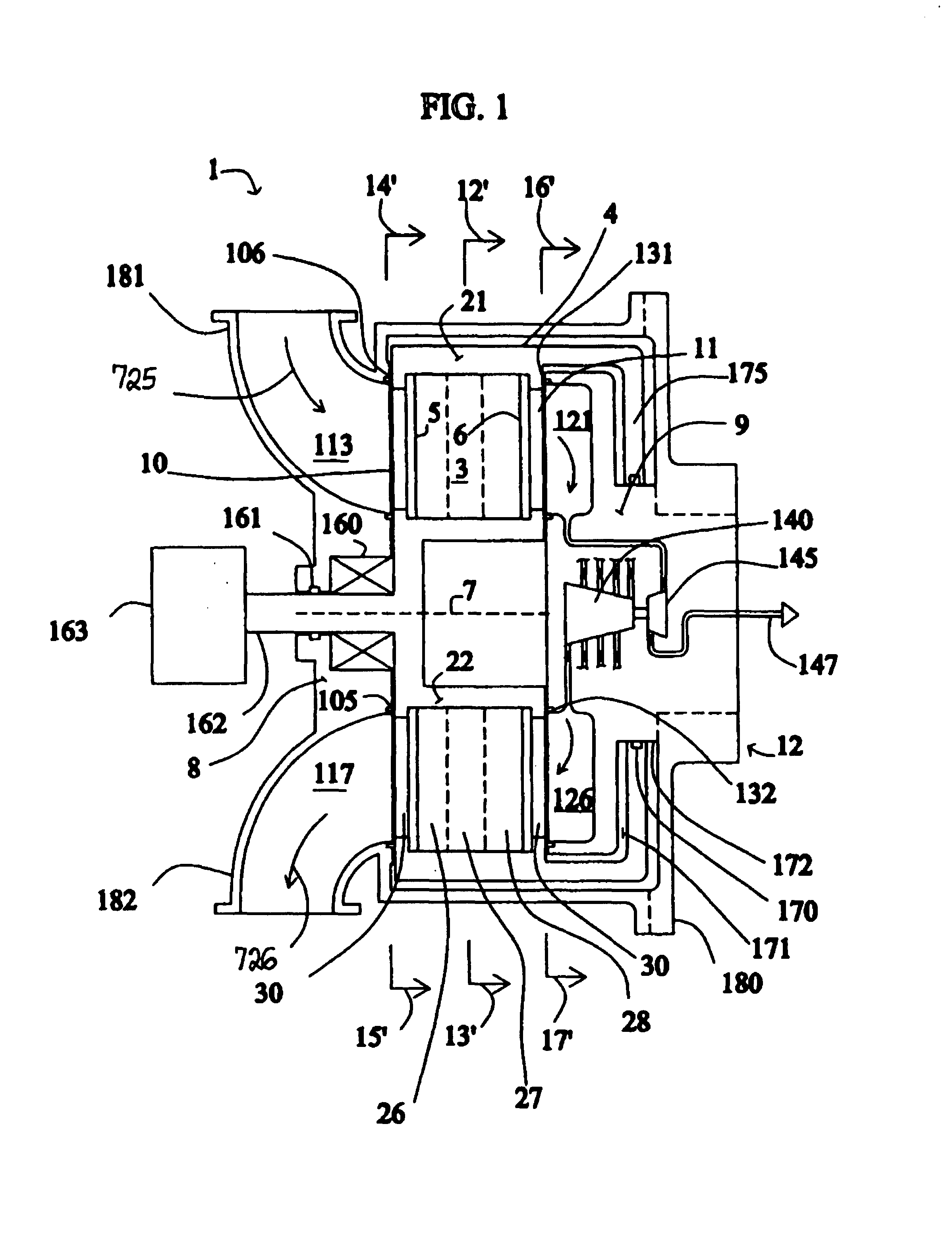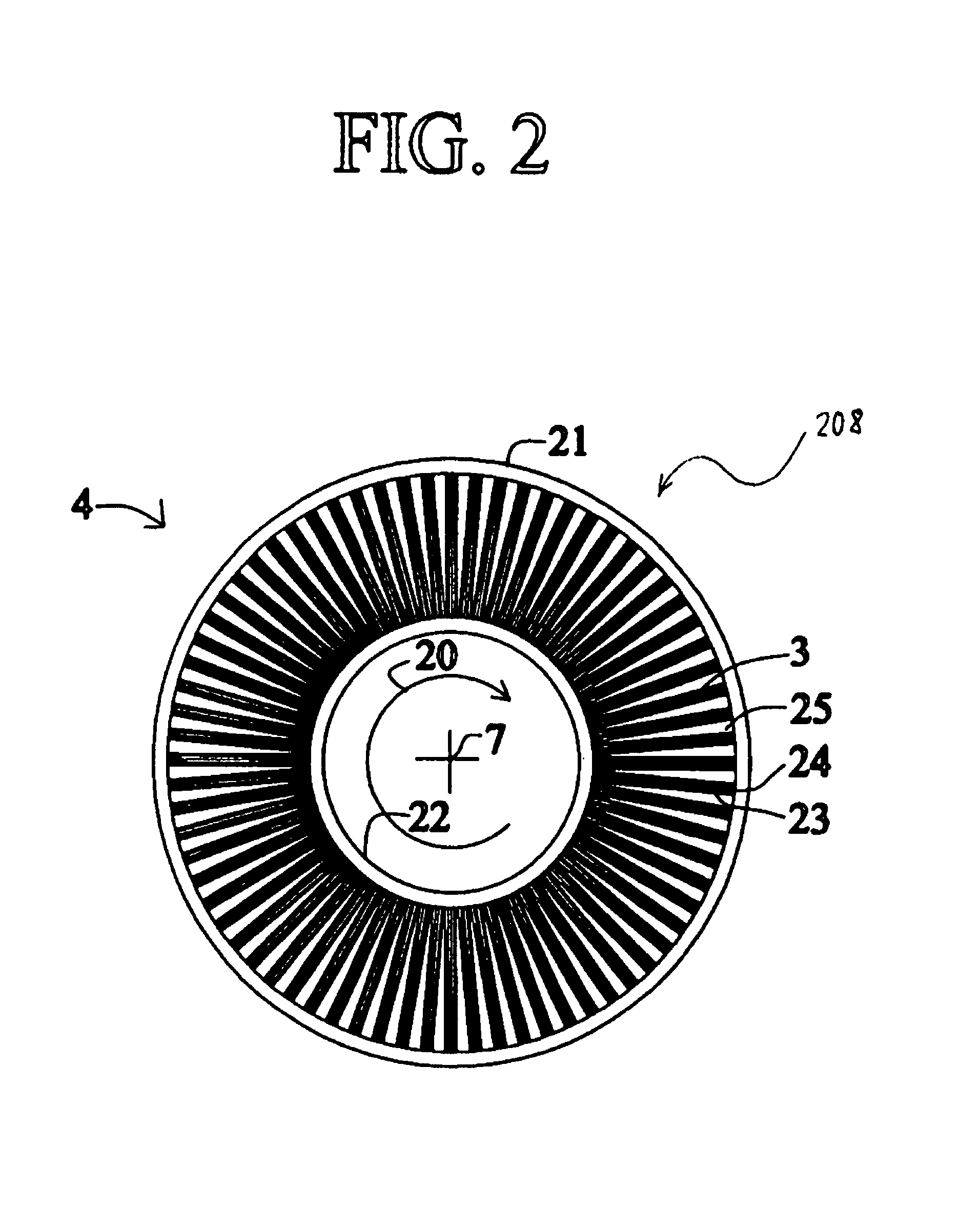Energy efficient gas separation for fuel cells
a fuel cell and gas separation technology, applied in the direction of hydrogen separation using solid contact, energy input, climate sustainability, etc., can solve the problems of degradation of cell voltage, serious limitations of prior art sofc systems, and serious limitations of high temperature operation of mcfc systems, so as to improve the overall efficiency of fuel cell systems, reduce the proportionate amount of carbon dioxide formed, and enhance oil recovery
- Summary
- Abstract
- Description
- Claims
- Application Information
AI Technical Summary
Benefits of technology
Problems solved by technology
Method used
Image
Examples
Embodiment Construction
FIGS. 1-5
[0041]An oxygen-enrichment rotary PSA module is described below in connection with FIGS. 1-5B, but the same or similar rotary PSA module configuration could be used for hydrogen enrichment (i.e., separation) in the disclosed electrical current generating systems. As used herein, a “rotary PSA” includes, but is not limited to, either a PSA wherein an array of adsorbers rotates relative to a fixed valve face or stator or a PSA wherein the valve face or stator rotates relative to an array of adsorbers.
[0042]FIG. 1 shows a rotary PSA module 1, which includes a number “N” of adsorbers 3 in adsorber housing body 4. Each adsorber has a first end 5 and a second end 6, with a flow path therebetween contacting a nitrogen-selective adsorbent (for oxygen enrichment). The adsorbers are deployed in an axisymmetric array about axis 7 of the adsorber housing body. The housing body 4 is in relative rotary motion about axis 7 with first and second functional bodies 8 and 9, being engaged acr...
PUM
| Property | Measurement | Unit |
|---|---|---|
| temperature | aaaaa | aaaaa |
| temperature | aaaaa | aaaaa |
| temperature | aaaaa | aaaaa |
Abstract
Description
Claims
Application Information
 Login to View More
Login to View More - R&D
- Intellectual Property
- Life Sciences
- Materials
- Tech Scout
- Unparalleled Data Quality
- Higher Quality Content
- 60% Fewer Hallucinations
Browse by: Latest US Patents, China's latest patents, Technical Efficacy Thesaurus, Application Domain, Technology Topic, Popular Technical Reports.
© 2025 PatSnap. All rights reserved.Legal|Privacy policy|Modern Slavery Act Transparency Statement|Sitemap|About US| Contact US: help@patsnap.com



